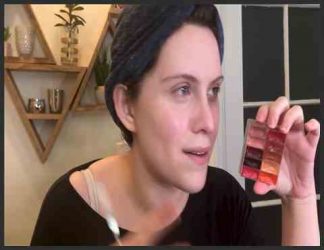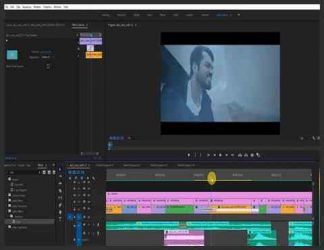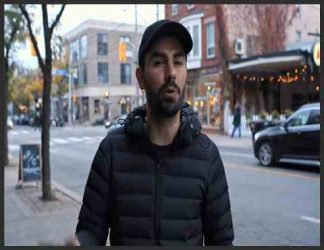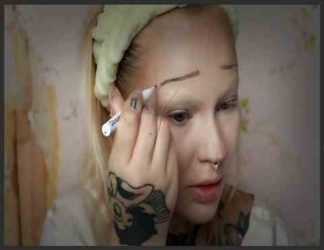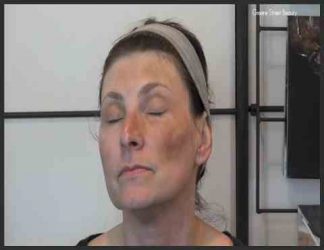You must need to login..!
توضیح
تنظیم نور برای عکاسی در فضای بیرون
برای دانلود رایگان تنظیم نور برای عکاسی در فضای بیرون با کیفیت full hd 1080p از پلیر سایت یا لینک زیر استفاده کنین
لینک دانلود link download
روشهای روشنایی مصنوعی که به نظر می رسد “طبیعی” است ، همان سرنخ های الگوی کنتراست را که در اشیاء سه بعدی دیده می شود ، شرایط مختلف نورپردازی است. پیکربندی نورپردازی استودیویی معمولی از یک منبع پر کننده برای کنترل صدای سایه ، یک چراغ اصلی کلید جلو برای ایجاد سرنخ های مدل سازی برجسته در قسمت جلوی شی که روبرو دوربین است بر روی سایه ها پر می شود ، یک یا چند چراغ حاشیه / لهجه تشکیل می دهد. برای کنترل لحن پس زمینه و جدایی بین آن و پیش زمینه ، جدایی بین پیش زمینه و پس زمینه و یک یا چند چراغ پس زمینه ایجاد کنید.
بین روشنایی طبیعی و منابع مصنوعی دو تفاوت اساسی وجود دارد. یکی شخصیت پر کردن و دیگری سرعت بیشتر در شدت سقوط است. در طبیعت ، چراغ قاری کاملاً جهت دار است و معمولاً از بالا روشن تر است. این ویژگی “پیچاندن اطراف” کپی کردن با یک منبع مصنوعی جهت دار دشوار است. در یک مکان استودیوی ثابت می توان گزاف گویی را به سمت عقب از یک دیوار سفید پر کرد تا فضای با نور منعکس شده غیرمستقیم شبیه به نحوه بازتاب خورشید از جو را پرتاب کند. روش دیگر تکمیل یک منبع پر از جهت دوربین با بازتابنده هایی است که در نزدیکی طرفین موضوع پیش زمینه قرار گرفته اند.
قانون معکوس مربع ، روش پیش بینی شده ای را که یک منبع نور از نقطه تابش می کند و شدت آن با فاصله تغییر می کند ، توصیف می کند. از آنجا که فاصله از یک منبع مساحت ردپای نور را با یک عامل چهار افزایش می دهد ، مربع ^ 2 فاصله است. از آنجا که به همان اندازه تعداد فوتون ها در فاصله چهار برابر مساحت پخش می شوند که مسافت دو برابر شود شدت در هر نقطه 1 / فاصله ^ 2 یا 1/4 قدرت خواهد بود. منابع نوري عكاسي منبع نوري نيستند ، بنابراين قانون به طور كامل اعمال نمي شود ، اما توضيح مي دهد كه چرا فاصله منابع مصنوعي به وسيله روش هايي كه در طبيعت مشاهده نمي شود ، تاثير گذاري بر روشنايي و راهبردهاي روشنايي مي كند.
طبق قانون مربع معکوس در صورت تغییر فاصله یک منبع نور در فاصله های زیر به ترتیب با افزایش 1 ، 1.4 ، 2 ، 2.8 ، 4 ، 5.6 ، 8 ، 11 ، 16 ، 22 ، 32 ، 45 ، 64 شدت کاهش می یابد با یک f / stop. از نظر عملی این بدان معناست که اگر یک چهره در یک پرتره گروهی از نور “کلید” 4 متر و دیگری 5.6 متر فاصله داشته باشد صورت از نور دورتر خواهد بود. در یک پرتره در فضای باز گروهی متشکل از 200 نفر که در یک روز پوشیده از نور گرفته می شوند ، نور همه صورت ها برابر خواهد بود. همان گروه عکاسی در داخل خانه ، نورپردازی یکنواخت بسیار سخت تر خواهد بود. ساده ترین استراتژی که به حداقل تجهیزات فلاش نیاز دارد ، گرفتن بالای گروه با دوربین ، نگاه داشتن آنها به بالا و گزاف گویی نور از سقف است ، بنابراین مانند یک روز پوشاننده ، هر چهره به همان اندازه برابر است با منبع ظاهری نور.
حتی چیزی که به عنوان پرتره سر و شانه ها اساسی باشد باید با قرار دادن جلوی صورت سوژه به عنوان نزدیک یا نزدیک به نور “کلید” از شانه یا هر قسمت دیگر بدن در صورت هدف ، سقوط مربع معکوس را در نظر بگیرد. برای اینکه جلوی صورت را به صورت کانتینرترین نقطه کانونی در پس زمینه تیره تر جلوه دهید. موقعیت منبع پر نسبت به صورت نیز تأثیر می گذارد که سایه بینی سبکترین است (هنگامی که پر در نزدیکی دوربین قرار دارد) تاریک ترین (هنگامی که پر به سمت قرار گیرد) یکی روی صورت. فاصله کلید و منابع پر از چهره بر میزان تأثیر گذار سایه ها از نور به تاریکی روی صورت تأثیر خواهد گذاشت.
Artificial lighting strategies which seem most “natural” duplicate the same contrast pattern clues seen on 3D objects is various lighting conditions. A typical studio lighting configuration will consist of a fill source to control shadow tone, a single frontal key light to create the highlight modeling clues on the front of object facing the camera over the shadows the fill illuminates, one or more rim/accent lights to create separation between foreground and background, and one or more background lights to control the tone of the background and separation between it and the foreground.
There are two significant differences between natural lighting and artificial sources. One is the character of the fill and the other is more rapid fall-off in intensity. In nature skylight fill is omni-directional and usually brighter from above. That “wrap around” characteristic is difficult to duplicate with a directional artificial source. In a fixed studio location it is possible to bounce fill backwards off a white wall to flood the space with indirect reflected light similar to how the sun reflects off the atmosphere. Another way is to supplement a fill source from the direction of the camera with reflectors placed near the sides of the foreground subject.
The Inverse-Square Law describes the predictable way a point light source radiates and changes in intensity with distance. As the distance from a source doubles the area of the footprint of light increase by a factor four, the square ^2 of the distance. Because the same number of photons are spread over four times the area when distance is doubled the intensity at any point will be 1/ distance ^2 or 1/4 the strength. Photographic light sources are not point light sources so the law does not strictly apply but it explains why distance of artificial sources affects the character of lighting and lighting strategies in ways not seen in nature.
According to the inverse-square law if the distance of a light source is changed in the following distance increments 1, 1.4, 2, 2.8, 4, 5.6, 8, 11, 16, 22, 32, 45, 64 the intensity will decrease by one f/stop. In practical terms it means if one face in a group portrait is 4m from the “key” light and another is 5.6m away the face further from the light will be one f/stop darker. In an outdoor portrait of a group of 200 people taken on an overcast day the lighting all the faces will be equal. The same group photographed indoors would be far more difficult to light evenly. The simplest strategy requiring the least flash equipment would be to get above the group with the camera, have them look up and bounce the lighting off the ceiling so like an overcast day every face is as equidistant as possible to the apparent source of the light.
Even something as basic as a head and shoulders portrait must take inverse-square fall-off into account by posing the front of the subject’s face as close or closer to the “key” light than the shoulder or any other body part if the goal is to make the front of the face the most strongly contrasting focal point on a darker background. The position of the fill source relative to the face will also affect whether the nose shadow is the lightest (when fill is centered near camera) darkest (when fill is placed to the side) one on the face. The distance of the key and fill sources to the face will affect the rate at which the shadows transition from light to dark on the face.






